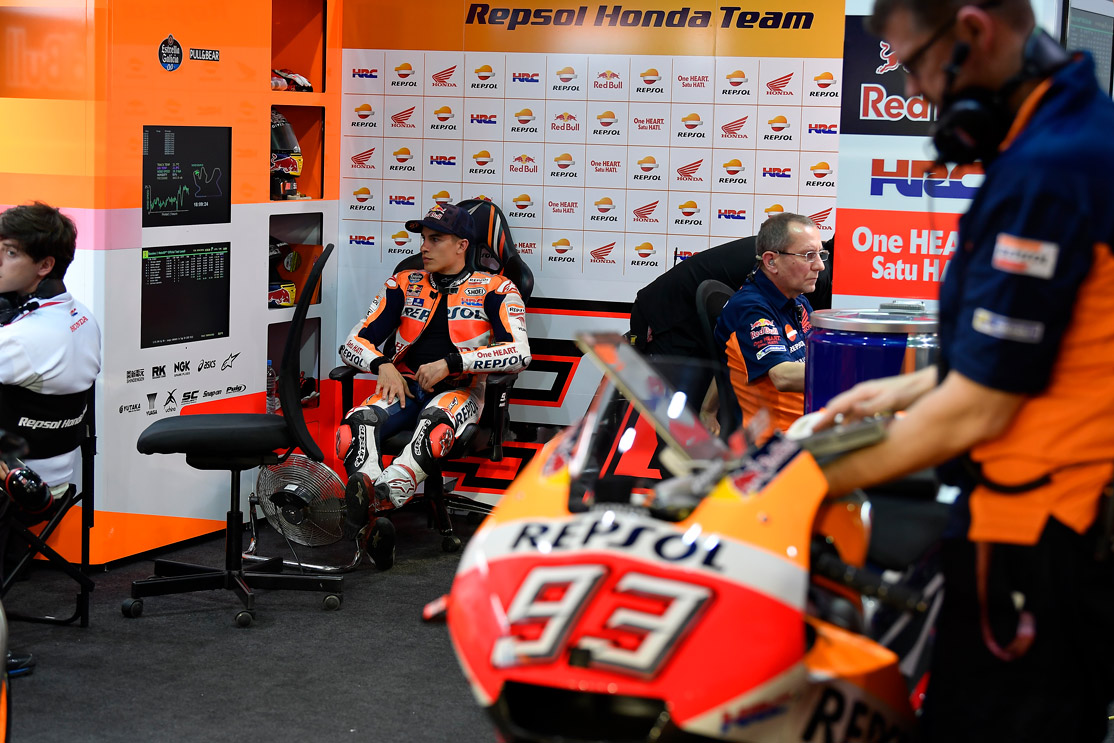The central importance of the engine leads it to have a significant number of sensors
The sensors on a MotoGP bike fulfil a multitude of objectives related to data capture. First of all, they provide a real-time diagnosis of the bike’s condition, which helps to ensure it is working properly. Furthermore, the data from the sensors is used to programme certain adjustments that make the bike easier to ride. In a single race, different adjustments can be made to the bike from section to section as the rider and engineers see fit. The sensors are what make this possible.
There is a regulation stating that all sensors must be homologated, although teams can use non-homologated sensors to take specific measurements during warm-ups, testing, and the FP4.
Speed sensors
Located on both wheels, these devices not only inform riders of their speed, but also detect the speed at which each wheel is spinning. This information allows the ECU (engine control unit) to detect any skidding or loss of traction. The ECU then adjusts the traction control, which is a key element during the race.


Suspension stroke sensors
These sensors calculate the stroke, position, and speed of the shock absorber. Thanks to them, it’s possible to have a much more precise suspension set-up because the team has precise data on its behaviour. The suspension sensors are especially useful when there are potholes (for example, in circuits like Silverstone) or if the bike is close to reaching the limits of the suspension. They are also essential to ensure the anti-wheelie system works correctly, which prevents the bike’s front tire from lifting off the ground.
Throttle position sensor
This sensor monitors the position of the throttle valve and sends the information to the ECU through an electronic system called “Ride by wire”. Before this was invented, a metal cable was used to link the throttle to the throttle body butterflies.





Gryoscopes and accelerometers
There are six of these elements in the inertial platform, which helps us take some of the bike’s most basic measurements. With these, we can calculate the acceleration or deceleration of the bike, along with its lean angle. The combination of this data makes it an essential tool. We can see this information in the footage from a rider’s OnBoard in the Dorna broadcast.
Sensors in the engine
The central importance of the engine as the element that powers the vehicle leads it to have a significant number of sensors, which measure variables including coolant temperature, RPM, oil pressure, and intake air temperature. When it comes to the engine, almost nothing goes without being measured, and for good reason!










Tyre air pressure sensors
The regulations were recently modified to make it mandatory for bikes to have sensors that measure the air pressure in a bike’s tyres. This information is logged to keep the riders safe and is of great importance for developing the tyres.
Track position sensor
This device is a transponder that detects the machine’s position on the circuit. It recognizes up to 25 different sectors, which makes it possible for the bike to know where it is at any given moment. As a result, the teams can programme different adjustments for almost every turn.





All this data allows the teams to take measurements and make calculations that help the bike go faster. However, even with all this data, there’s another sensor that processes and communicates the data, and it’s truly indispensable. We’re talking about the rider: in the end, there’s no better way to understand a bike than to ride it.


 Join Us
Join Us  Join Us
Join Us 